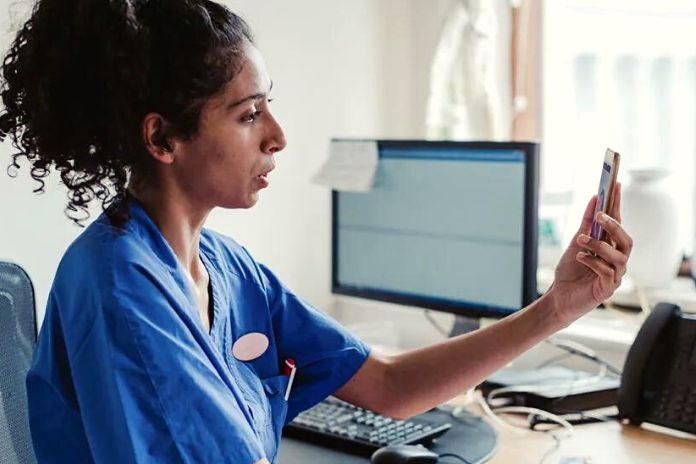What is telemedicine, what are its main fields, and what are its benefits: for patients and doctors, the economy, and the environment? Telemedicine is the branch of the most significant smart health that concerns multiple remote operations: from the classic online medical examination to teleconsultation, from remote cooperation to telemonitoring. It uses some of the most recent technologies of the moment to cancel the physical distance between doctor and patient.
One on all IoT and IoMT devices: devices capable of sharing large amounts of data in real-time, thanks to the Internet. To better understand telemedicine, it is necessary to enter into the merits of the above technologies and devices. But also the new procedures to be followed to book an online medical examination and the latest training methods available to healthcare personnel.
Telemedicine: What It Is And How It Works
To understand telemedicine, it is possible to start with a detailed reading of the term in question. The word “telemedicine” is composed of the noun ” medicine ” and the prefix ” tele, “which comes from the Greek (“téle,” or “τηλε”) and means ” far. ” The prefix “tele,” therefore, refers to an operation that can be carried out remotely. Consequently, telemedicine is a set of practices and processes that can be carried out at a distance, without needing physical proximity between doctor and patient. It can be considered the branch of a larger category, known as smart health (or e-health ): a new intelligent medicine that exploits the latest technologies and IoT devices.
Smart health also concerns the creation of an electronic health record and, more generally, the real-time sharing of patient information between different structures and professionals. But also, wearable devices can track vital parameters and certain environmental monitoring operations. Telemedicine is a branch of smart health that concerns operations, practices, and processes that the doctor can carry out remotely from the patient. There are four main fields in which telemedicine develops: remote visits, teleconsultation, remote cooperation, and telemonitoring. Similar areas, among which it is essential to learn not to confuse.
The remote visit is a technological evolution of the classic visit carried out in a studio. In this case, however, the doctor and the patient are not physically in the same place but still come into contact thanks to technology. For example, it used hardware and software for video conferencing: Skype to Zoom, Google Meet, or Microsoft Teams. Teleconsultation uses the same devices as the remote visit, with the difference that it does not concern the patient. It is, in fact, a moment of confrontation between professionals: an opportunity to analyze a diagnosis and to make decisions about the best treatments to prescribe.
Remote cooperation is conceptually similar to teleconsultation, which differs mainly in context. We can talk about remote collaboration in emergencies, where a doctor or healthcare professional helps a colleague from a distance. Finally, telemonitoring simply consists of the remote control of the parameters of one or more patients. IoT devices specially prepared for telemonitoring are known as IoMT: an acronym that refers to the Internet of Medical Things.
The Advantages Of Telemedicine
Telemedicine is integral to an international digitization process that gradually involves the most disparate sectors. It is a technological revolution that has many benefits. Eliminating geographical barriers makes it possible to guarantee a much more homogeneous healthcare offer throughout the national territory. This means that more people are reached and, above all, it is easier to get those in a problematic condition.
Think of the elderly, the chronically ill, or all those living in remote and poorly connected areas—millions of patients who, thanks to telemedicine, can return to be monitored constantly. The benefits of telemedicine also concern the decrease in the number of hospitalizations. An assumption that generates a double advantage: is the reduced waiting times for patients. Cost reduction for healthcare facilities. Not to mention the environmental benefits: for example, the removal of CO2 resulting from a radical decrease in travel.
How An Online Medical Examination Works
Today telemedicine is part of the National Health Service, which in 2020 delimited some of its most essential guidelines. First, the criteria and situations that make its use necessary have been defined. This is the case, for example, of health emergencies, but also the management and control of specific pathologies: from cardiovascular to respiratory, passing through psychological discomforts, disabilities, autoimmune diseases, and scarce ones. The patient who wants to take advantage of an online medical examination must give initial adhesion and availability to an electronic contact.
The management of digital health services is the responsibility of the individual regions. A user who wants to book a medical visit online can refer to one of the sites of the Regional Health System: here, he will find all the general information of the case, as well as the decrees and in-depth news available. In addition to the public health system, it is possible to carry out an online medical examination through television services provided by private structures with services that can be easily used from the App. After that, you can contact your GP or the facility where you are being treated.
The staff will be concerned about providing all information regarding the available telemedicine services. Citizens, however, are not the only ones called to change certain habits. The spread of telemedicine also provides for professional updating by health personnel. In this sense, the Screen Side Manner scientific method is exciting: a set of guidelines created to improve online visits’ effectiveness. Universities and institutes around the world use SSM. It includes indications on how to perform the anamnesis correctly, evaluate the clinical signs at a distance, and prescribe adequate treatment. The various SSM courses are also customized according to the professional or medical specialty they are targeting.

